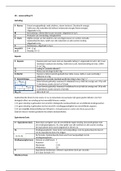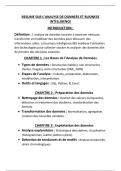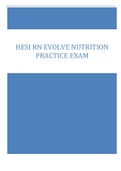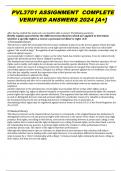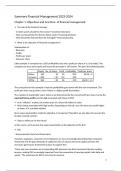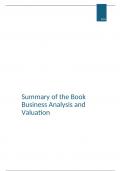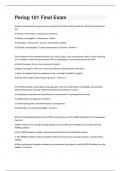Ventilation (+work)
March 13, 2022
Shortness of breath is that it costs more energy to breathe than normal.
PaO2 is the partial pressure in the blood. It’s the pressure that O2 has in the blood.
➢ (Medical) Physiology (what)
• The logic of life
• The basis for the Nobel prize of ‘Physiology or Medicine’
• Division in
– ‘Animal’ physiology – dealing with changes in the external environment
– Vegetative physiology – dealing with changes in the internal environment --> Our focus
➢ Set up course
• Respiratory physiology
- Ventilation, ventilation problems, ventilation-perfusion
- Practical spirometry(=respiratory laboratory)
• Internal environment
- Internal environment, problem internal environment, gas transport
• Cardiovascular physiology
- Heart electric, heart mechanical, heart problems, heart and circulation, exercise
and shock
- Practical cardiovascular laboratory (=Heart and Vessels)
- Exercise physiology, including circulation and reflexes
• Gastrointestinal physiology
• Renal physiology
- Kidney, problem: changed kidney function, reabsorption and secretion, osmo-
and volume regulation, fluid problems
• Learning material: all slides, assignments, manuals + introduction and preparatory
assignments for practicals, content practicals, readers, and the book
• Explain our slides to others!
• Examination: digital exam in Aletta Jacobs hall (separate Nestor course) on June 7th
– MC questions and fill-in-the-blanks / short-answer questions
➢ Overview breathing
• Aims and components; Airways and spirometry
• Ventilation
- Pressures and static volume-pressure curve
- Compliance and resistance
• Work of breathing (dynamic volume-pressure curve)
, - Aims and components; Airways and spirometry
➢ Aim and components of breathing
Supply the cells in the body with O2 and get rid of the CO2 that is produced
in the cellular metabolism
Ventilation is only the movement of air in and out of the lungs. Breathing
entails more.
Breathing is both ventilation, alveolar diffusion (exchange of gasses over the
membrane), prefusion (pumping blood through the lungs), how perfusion and
ventilation are adjusted to each other, gas transport (hemoglobin which
determines how much O2 the blood can carry), tissue diffusion (exchange of
gases at the level of different tissues) and cellular respiration (the use of O2
by cells and the production of CO2).
Cells produce energy by CAC, electron transport chain and glycogen.
➢ Processes involved in breathing
• Transport of gases in and out of the lungs --> ventilation
• Diffusion between alveoli and blood --> gas exchange
• Tuning ventilation and lung perfusion --> Ventilation/perfusion ratio
• Transport of gases in the blood --> Gas transport
• Exchange of gas between blood and cells → Gas exchange (or diffusion)
• Use of O2 and production of CO2 in cells → Cellular respiration
➢ Anatomy of the airways
Realize that part of it is just a conducting zone where nothing happens
to the air. Only at the latest levels of the bronchioles and alveoli is
where the gas exchange happens and where the diffusion happens.
This is the most important part of the lungs for the diffusion.
How much air do you breathe in with every breath? (And breathe
out again) → Tidal volume
- 0,5 L → Based on 20 Y. old healthy males
How much of that volume can we use for gas exchange? Or how much of that air keeps
hanging out in the anatomical death space/conducting zone (we don’t use that air for the
diffusion)
- 0,15 L is in the anatomical death space → Waste of air/energy
➢ Schematic drawing of airways and the alveoli and capillary networks
A huge surface area for gas exchange when we’re in those alveoli.
, ➢ Spirometry
Water-based system. You can see how the lid goes down
when you suck air out of it and then the pen will go up. So
you make a spirogram. You have the tidal volume and you
need to calculate both volumes and capacities.
Expiratory reserve volume is what you can squeeze out of
your lungs
Residual volume is air that you can’t get out of your lungs
→ There is always some air in the lungs → Is about 1,1 L
(1,0 – 1,5L).
Inspiratory reserve volume ??
If we add two volumes you get a capacity.
- Vital capacity
- Inspiratory capacity
- Functional residual capacity → Important since this is the amount of air that you
have in the lungs since the start of inspiration. Then we breathe in 500 ml of air full
of O2 and mixes with the old air that’s still in there. So the O2 content of the air that
we breathe in decreases since it mixes with the still air that was already still there.
➢ Static lung volumes and capacities
• Tidal volume --> VT
• Inspiratory Reserve Volume --> IRV
• Expiratory Reserve Volume --> ERV
• Residual Volume --> RV
• Functional Residual Capacity --> FRC = ERV + RV
• Inspiratory Capacity --> IC = VT + IRV
• Vital Capacity --> VC = IC + ERV
• Total Lung Capacity --> TLC = VC + RV
Know them. Be able to calculate them.
- Ventilation
➢ Ventilation
Boyle’s law: P*V = constant
=> ventilation causes pressure changes in the lung
We contract the diaphragm which enlarges the volume of the
thoracic cavity.
We create a change and that causes something.
What happens if we increase the volume and make the
thoracic cavity larger
- Lowers the air pressure and therefore air will flow in to the lungs
- We create a volume change that induces a pressure difference and then air flows in
When we relax the thoracic cavity will become small so the pressure is lower and air is
pushed out.
Boyle’s law is a constant value so if we change the volume we also change the pressure.
The external .. muscle are used to breathe in.
The internal .. muscles are used to pulling them back in and therefore for expiration.
, The diaphragm is a thin skeletal muscle that sits at the base of the chest and separates the
abdomen from the chest. It contracts and flattens when you inhale. This creates a vacuum
effect that pulls air into the lungs. When you exhale, the diaphragm relaxes and the air is
pushed out of lungs.
➢ Inspiration
1. Lung is expanded → Depending on compliance
2. Air starts flowing → Depending on resistance
Green is the membrane around the thoracic cavity
Black is the membrane round the lungs
You expand the thoracic cavity which increases the volume of the
intrapleural space which reduces the pressure of the pleural
space/intrapleural space/interpleural space (all the same). So we
decrease the pleural pressure and that pulls on the lungs so the lung will be
expanded and that makes the pressure inside the alveoli to go down.
How much we expand the lungs depend on the compliance of the lung/stiffness
of the lung. Then air starts flowing. How much air flows in depends on how much
resistance there is. Resistance is something that only exist when something is
flowing.
➢ Forces to be overcome during breathing
• Elastic forces (‘static’): • Resistance forces (‘dynamic’):
– retraction forces lung – airway resistance
– retraction forces thorax wall – tissue resistance
The thoracic cavity prefers to be somewhat larger than it is at the start of inspiration.
The lungs want to be small. So they’re pulling on each other. When we do start breathing
and air starts flowing there is airway resistance. When we are expanding the thoracic
activity tissues are sliding over each other, so also tissue resistance, but this we often
neglect. We only talk about airway resistance.
➢ Relation between lungs and thorax
We have the alveolar pressure in the lungs. We have the
pleural pressure and we have the outside air pressure.
Those are pressures inside those cavities. We want to know
the transmural pressure (pressure over the wall). We have
different transmural pressures:
- Over the lung wall (Plung): pressure inside the alveolar
minus pressure inside pleural space
→ Measure the pressure in the lung/alveoli by putting the
manometer in the mouth. Wait until the equilibrium has set in.
→ Measure the pleural pressure by putting the manometer esophagus. It’s lower
than the outside air pressure. Therefore, it’s a negative pressure. The outside air is
then putted at 0.
What is the alveolar pressure at the start of inspiration in the alveoli when the outside air
pressure is 0?
- Also 0.

